Surface Morphology Changes of Bleached Dental Ceramics
Abstract
1. Introduction
2. Materials and Methods
2.1. Preparation of Dental Ceramics Samples
2.2. Bleaching of Samples
2.3. Evaluation of Surface Topography of Specimens
2.4. Evaluation of Colour of Specimens
2.5. Statistical Analysis
3. Results
4. Discussions
5. Conclusions
Author Contributions
Funding
Institutional Review Board Statement
Informed Consent Statement
Data Availability Statement
Conflicts of Interest
References
- Mohammadibassir, M.; Rezvani, M.B.; Golzari, H.; Salehi, E.M.; Fahimi, M.A.; Fard, M.J.K. Effect of Two Polishing Systems on Surface Roughness, Topography, and Flexural Strength of a Monolithic Lithium Disilicate Ceramic. J. Prosthodont. 2017, 28, e172–e180. [Google Scholar] [CrossRef] [PubMed]
- Dawood, L.; Soliman, F.M.; El-Farag, S.A.A. Effect of In-Office Bleaching Techniques and Topical Fluoride Application on Color and Surface Roughness of Two Types of Dental Ceramics (In-Vitro Study). Egypt. Dent. J. 2020, 66, 1243–1251. [Google Scholar] [CrossRef]
- Mourouzis, P.; Koulaouzidou, E.A.; Helvatjoglu-Antoniades, M. Effect of in-office bleaching agents on physical properties of dental composite resins. Quintessence Int. 2013, 44, 295–302. [Google Scholar] [CrossRef] [PubMed]
- Mota, G.M.D.S.M.; Kury, M.; Tenório, C.P.D.S.B.; Amaral, F.L.B.D.; Turssi, C.P.; Cavalli, V. Effects of Artificial Staining and Bleaching Protocols on the Surface Roughness, Color, and Whiteness Changes of an Aged Nanofilled Composite. Front. Dent. Med. 2020, 1, 20. [Google Scholar]
- Wijetunga, C.L.; Otsuki, M.; Hiraishi, N.; Luong, M.N.; Tagami, J. Effect of pH of bleaching agent on tooth bleaching action in vitro. Dent. Mater. J. 2021, 40, 566–572. [Google Scholar] [CrossRef]
- Zarone, F.; Di Mauro, M.I.; Ausiello, P.; Ruggiero, G.; Sorrentino, R. Current status on lithium disilicate and zirconia: A narrative review. BMC Oral Health 2019, 19, 134. [Google Scholar] [CrossRef]
- Demir, N.; Karci, M.; Ozcan, M. Effects of 16% Carbamide Peroxide Bleaching on the Surface Properties of Glazed Glassy Matrix Ceramics. BioMed Res. Int. 2020, 2020, 1864298. [Google Scholar] [CrossRef]
- Tinastepe, N.; Malkondu, O.; Iscan, I.; Kazazoglu, E. Effect of home and over the contour bleaching on stainability of CAD/CAM esthetic restorative materials. J. Esthet. Restor. Dent. 2021, 33, 303–313. [Google Scholar] [CrossRef]
- Karakaya, I.; Cengiz-Yanardag, E. Changes in Optical Characteristics and Surface Topography of CAD/CAM Materials after Bleaching Applications: An AFM Evaluation. J. Prosthodont. 2019, 29, 226–236. [Google Scholar] [CrossRef]
- Heintze, S.; Forjanic, V.; Rousson, V. Surface roughness and gloss of dental materials as a function of force and polishing time in vitro. Dent. Mater. Off. Publ. Acad. Dent. Mater. 2006, 22, 146–165. [Google Scholar] [CrossRef]
- Kwon, S.R.; Wertz, P.W. Review of the Mechanism of Tooth Whitening. J. Esthet. Restor. Dent. 2015, 27, 240–257. [Google Scholar] [CrossRef] [PubMed]
- Mondelli, R.F.L.; Soares, A.F.; Pangrazio, E.G.K.; Wang, L.; Ishikiriama, S.K.; Bombonatti, J.F.S. Evaluation of temperature increase during in-office bleaching. J. Appl. Oral Sci. 2016, 24, 136–141. [Google Scholar] [CrossRef] [PubMed][Green Version]
- Alqahtani, M.Q. Tooth-bleaching procedures and their controversial effects: A literature review. Saudi Dent. J. 2014, 26, 33–46. [Google Scholar] [CrossRef] [PubMed]
- Baroudi, K.; Hassan, N.A. The effect of light-activation sources on tooth bleaching. Niger. Med. J. 2014, 55, 363–368. [Google Scholar] [CrossRef] [PubMed]
- Mondelli, R.F.L.; Azevedo, J.F.D.E.G.D.; Francisconi, A.C.; de Almeida, C.M.; Ishikiriama, S. Comparative clinical study of the effectiveness of different dental bleaching methods—Two year follow-up. J. Appl. Oral Sci. 2012, 20, 435–443. [Google Scholar] [CrossRef] [PubMed]
- Lilaj, B.; Dauti, R.; Agis, H.; Schmid-Schwap, M.; Franz, A.; Kanz, F.; Moritz, A.; Schedle, A.; Cvikl, B. Comparison of Bleaching Products With Up to 6% and With More Than 6% Hydrogen Peroxide: Whitening Efficacy Using BI and WID and Side Effects—An in vitro Study. Front. Physiol. 2019, 10, 919. [Google Scholar] [CrossRef]
- Coceska, E.; Gjorgievska, E.; Coleman, N.J.; Gabric, D.; Slipper, I.J.; Stevanovic, M.; Nicholson, J.W. Enamel alteration following tooth bleaching and remineralization. J. Microsc. 2016, 262, 232–244. [Google Scholar] [CrossRef]
- Grazioli, G.; Valente, L.L.; Isolan, C.P.; Pinheiro, H.A.; Duarte, C.G.; Münchow, E.A. Bleaching and enamel surface interactions resulting from the use of highly-concentrated bleaching gels. Arch. Oral Biol. 2018, 87, 157–162. [Google Scholar] [CrossRef]
- Anusavice, K.J. Degradability of dental ceramics. Adv. Dent. Res. 1992, 6, 82–89. [Google Scholar] [CrossRef]
- Karaokutan, I.; Aykent, F. Effect of a Home Bleaching Agent on the Ion Elution of Different Esthetic Materials. J. Prosthodont. 2020, 29, 805–813. [Google Scholar] [CrossRef]
- Ourique, S.A.M.; Arrais, C.A.G.; Cassoni, A.; Ota-Tsuzuki, C.; Rodrigues, J.A. Effects of different concentrations of carbamide peroxide and bleaching periods on the roughness of dental ceramics. Braz. Oral Res. 2011, 25, 453–458. [Google Scholar] [CrossRef] [PubMed]
- Şahin, N.; Sahmali, S.M.; Uyar, A. Effect of Two Vital Bleaching Agents on the Color Properties of the Low-Fusing Dental Ceramics. Acta Stomatol. Cappadocia 2021, 1, 6–20. [Google Scholar] [CrossRef]
- Bahannan, S.A. Effects of different bleaching agent concentrations on surface roughness and microhardness of esthetic restorative materials. Saudi J. Dent. Res. 2015, 6, 124–128. [Google Scholar] [CrossRef]
- Rea, F.T.; Roque, A.C.C.; Macedo, A.P.; Almeida, R.P. Effect of carbamide peroxide bleaching agent on the surface roughness and gloss of a pressable ceramic. J. Esthet. Restor. Dent. 2019, 31, 451–456. [Google Scholar] [CrossRef]
- Zaki, A.A.; Fahmy, N.Z. The Effect of a Bleaching System on Properties Related to Different Ceramic Surface Textures. J. Prosthodont. 2009, 18, 223–229. [Google Scholar] [CrossRef]
- Rodrigues, J.A.; Oliveira, G.P.F.; Amaral, C.M. Effect of thickener agents on dental enamel microhardness submitted to at-home bleaching. Braz. Oral Res. 2007, 21, 170–175. [Google Scholar] [CrossRef]
- Morkūnaitė, G.; Ožiūnas, R.; Čeplauskas, V. Color changes of dental ceramics exposed to bleaching materials. In Proceedings of the Medical Physics in the Baltic States: 15th International Conference on Medical Physics, Kaunas, Lithuania, 4–6 November 2021; Adlienė, D., Ed.; Kaunas University of Technology: Kaunas, Lithuania, 2021; pp. 125–128, ISSN 1822-5721. [Google Scholar]
- Turker, B.; Biskin, T. Effect of three bleaching agents on the surface properties of three different esthetic restorative materials. J. Prosthet. Dent. 2003, 89, 466–473. [Google Scholar] [CrossRef]
- Cehreli, Z.C.; Yazici, R.; García-Godoy, F. Effect of home-use bleaching gels on fluoride releasing restorative materials. Oper. Dent. 2003, 28, 605–609. [Google Scholar]
- Attin, T.; Hannig, C.; Wiegand, A.; Attin, R. Effect of bleaching on restorative materials and restorations—A systematic review. Dent. Mater. 2004, 20, 852–861. [Google Scholar] [CrossRef]
- Silva, M.D.A.; Davies, R.; Stewart, B.; DeVizio, W.; Tonholo, J.; Júnior, J.D.S.; Pretty, I. Effect of whitening gels on the surface roughness of restorative materials in situ. Dent. Mater. 2006, 22, 919–924. [Google Scholar] [CrossRef]
- Zavanelli, A.C.; Mazaro, V.Q.; Silva, C.R.; Zavanelli, R.A.; Mancuso, D.N. Surface roughness analysis of four restorative materials exposed to 10% and 15% carbamide peroxide. Int. J. Prosthodont. 2011, 24, 155–157. [Google Scholar] [PubMed]
- Duschner, H.; Götz, H.; White, D.J.; Kozak, K.M.; Zoladz, J.R. Effects of hydrogen peroxide bleaching strip gels on dental restorative materials in vitro: Surface microhardness and surface morphology. J. Clin. Dent. 2004, 15, 105–111. [Google Scholar] [PubMed]
- Kara, H.; Aykent, F.; Ozturk, B. The Effect of Bleaching Agents on the Color Stability of Ceromer and Porcelain Restorative Materials In Vitro. Oper. Dent. 2013, 38, E1–E8. [Google Scholar] [CrossRef] [PubMed]

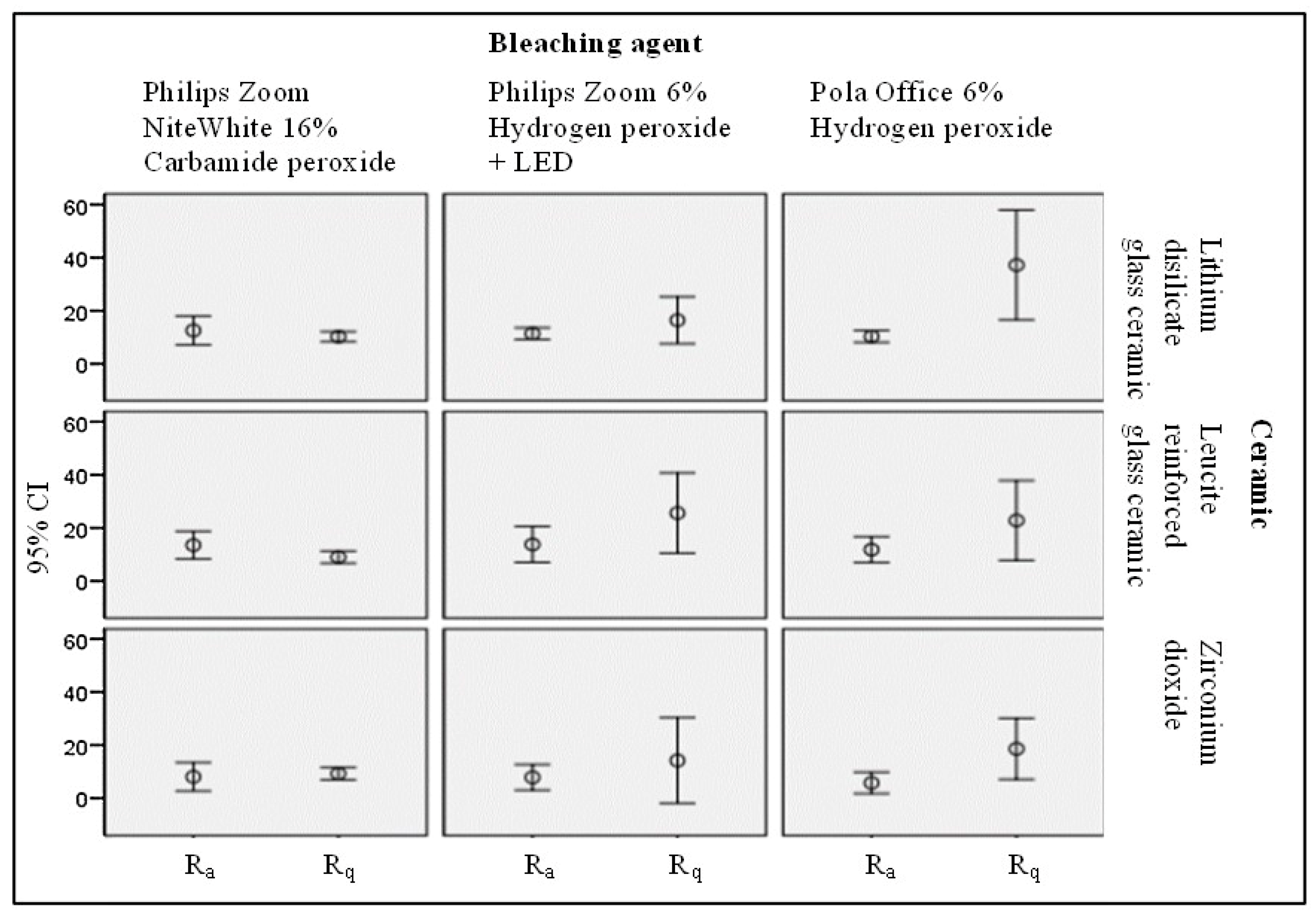
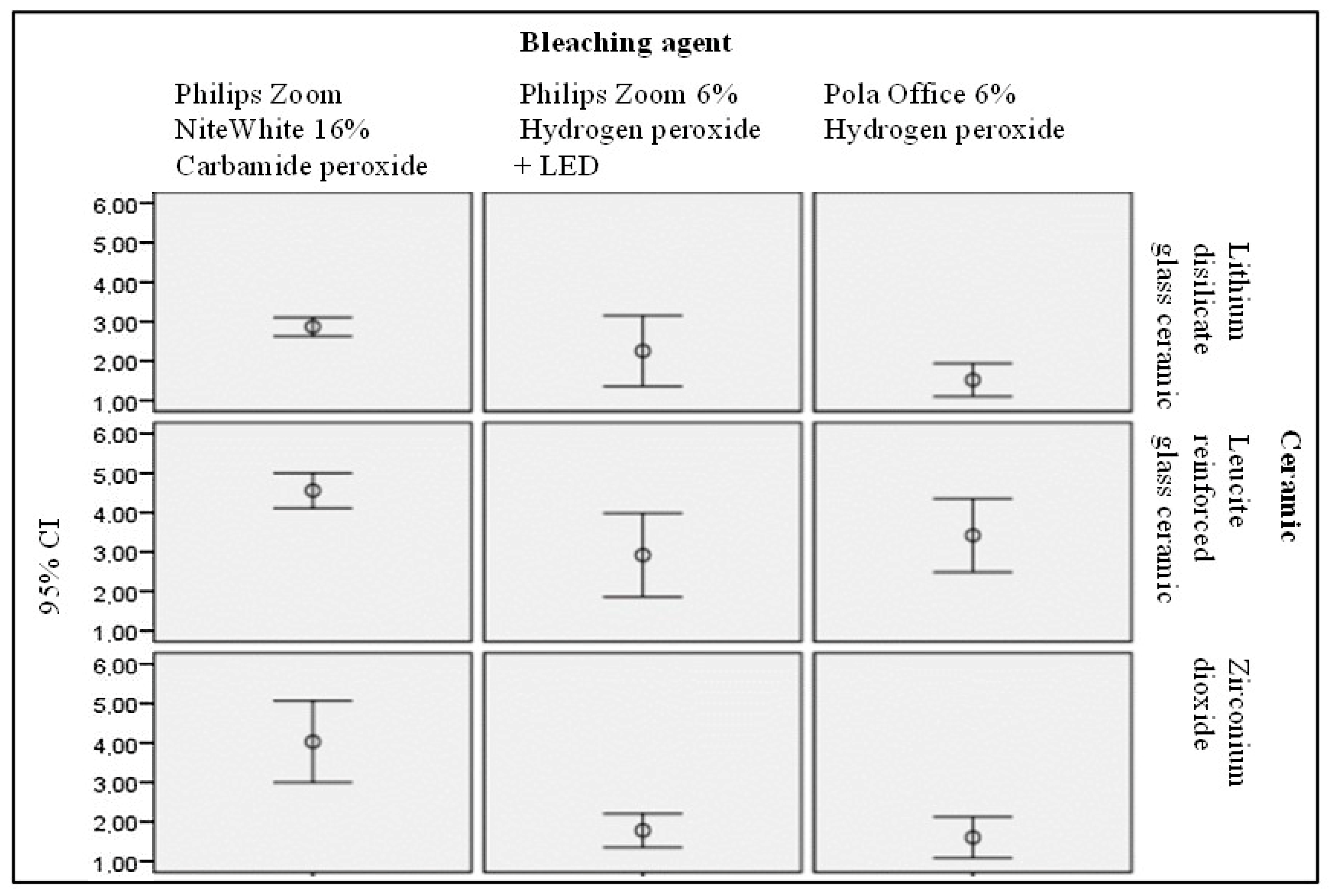
| ∆E | NBS Criteria |
|---|---|
| 0.0–0.5 | Trace: remarkably slight alteration |
| 0.5–1.5 | Slight: slight alteration |
| 1.5–3.0 | Noticeable: observable alteration |
| 3.0–6.0 | Appreciable: apparent alteration |
| 6.0–12.0 | Much: remarkably apparent alteration |
| 12.0 and more | Very much: alteration to another colour |
| Dental Ceramic | Before Bleaching | 16% CP | 6% HP + LED | 6% HP |
|---|---|---|---|---|
| Polished lithium disilicate | 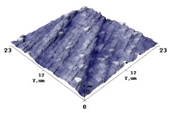 | 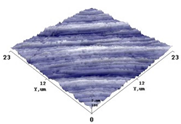 |  | 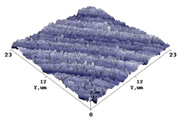 |
| Ra1 = 12.31 nm; Rq1 = 15.92 nm | Ra2 = 12.35 nm; Rq2 = 15.61 nm | Ra2 = 7.22 nm; Rq2 = 9.18 nm | Ra2 = 15.86 nm; Rq2 = 20.14 nm | |
| Glazed lithium disilicate |  | 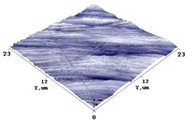 |  | 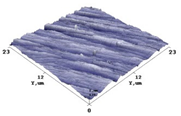 |
| Ra1 = 14.16 nm; Rq1 = 18.60 nm | Ra2 = 9.60 nm; Rq2 = 11.82 nm | Ra2 = 6.88 nm; Rq2 = 9.65 nm | Ra2 = 11.61 nm; Rq2 = 14.68 nm | |
| Polished leucite- reinforced glass ceramic | 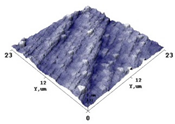 | 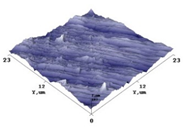 | 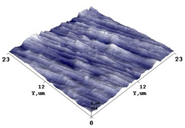 |  |
| Ra1 = 12.44 nm; Rq1 = 16.84 nm | Ra2 = 12.92 nm; Rq2 = 16.57 nm | Ra2 = 10.86 nm; Rq2 = 13.76 nm | Ra2 = 36.52 nm; Rq2 = 52.38 nm | |
| Glazed leucite- reinforced glass ceramic | 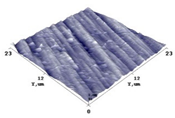 |  | 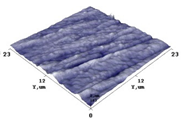 | 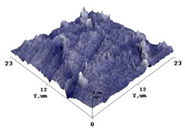 |
| Ra1 = 7.94 nm; Rq1 = 10.05 nm | Ra2 = 9.26 nm; Rq2 = 11.60 nm | Ra2 = 7.95 nm; Rq2 = 10.35 nm | Ra2 = 17.61 nm; Rq2 = 22.66 nm | |
| Polished zirconium dioxide | 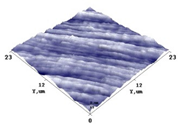 | 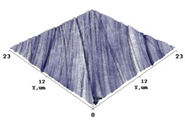 | 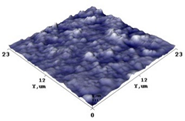 | 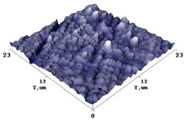 |
| Ra1 = 8.14 nm; Rq1 = 9.85 nm | Ra2 = 7.25 nm; Rq2 = 9.51 nm | Ra2 = 9.95 nm; Rq2 = 13.20 nm | Ra2 = 15.47 nm; Rq2 = 20.92 nm | |
| Glazed zirconium dioxide | 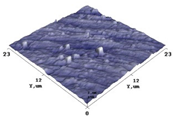 | 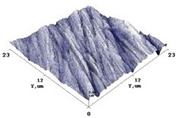 | 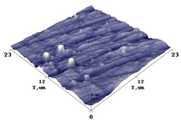 | 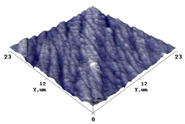 |
| Ra1 = 7.51 nm; Rq1 = 10.08 nm | Ra2 = 15.43 nm; Rq2 = 19.73 nm | Ra2 = 8.65 nm; Rq2 = 12.09 nm | Ra2 = 10.87 nm; Rq2 = 13.94 nm |
| Surface Roughness, nm | ||||
|---|---|---|---|---|
| Dental Ceramic | Before Bleaching | Treated with 16% CP | Treated with 6% HP + LED | Treated with 6% HP |
| Polished lithium disilicate | Ra1 = 11.39 ± 3.36 | Ra2 = 10.22 ± 1.84 | Ra2 = 16.39 ± 8.44 | Ra2 = 37.17 ± 19.92 |
| Rq1 = 16.24 ± 5.65 | Rq2 = 12.84 ± 2.39 | Rq2 = 23.23 ± 13.20 | Rq = 50.69 ± 26.49 | |
| Glazed lithium disilicate | Ra1 = 12.36 ± 2.76 | Ra2 = 9.82 ± 4.44 | Ra2 = 16.55 ± 8.46 | Ra2 = 13.43 ± 4.98 |
| Rq1 = 17.91 ± 4.85 | Rq2 =12.39 ± 5.42 | Rq =22.74 ± 11.69 | Rq2 = 18.19 ± 6.18 | |
| Polished leucite-reinforced glass ceramic | Ra1 = 13.15 ± 5.13 | Ra2 = 9.12 ± 2.17 | Ra2 = 25.68 ± 14.40 | Ra2 = 22.89 ± 14.30 |
| Rq1 = 17.68 ± 6.72 | Rq2 = 11.72 ± 2.72 | Rq = 38.49 ± 22.08 | Rq2 = 32.34 ± 11.52 | |
| Glazed leucite-reinforced glass ceramic | Ra1 = 10.84 ± 4.50 | Ra2 = 9.20 ± 2.16 | Ra2 = 11.33 ± 4.91 | Ra2 = 21.76 ± 11.99 |
| Rq1 = 14.95 ± 7.29 | Rq2 = 11.88 ± 2.84 | Rq = 17.67 ± 8.88 | Rq2 = 32.97 ± 19.76 | |
| Polished zirconium dioxide | Ra1 = 7.47 ± 4.41 | Ra2 = 9.50 ± 2.22 | Ra2 = 14.44 ± 5.36 | Ra2 = 18.83 ± 10.95 |
| Rq1 = 10.07 ± 6.31 | Rq2 = 12.63 ± 3.46 | Rq = 21.60 ± 13.97 | Rq2 = 25.29 ± 13.96 | |
| Glazed zirconium dioxide | Ra1 = 9.33 ± 3.45 | Ra2 = 12.26 ± 3.06 | Ra2 = 13.57 ± 3.84 | Ra2 = 20.92 ± 15.11 |
| Rq1 = 12.40 ± 4.63 | Rq2 = 15.91 ± 3.82 | Rq = 18.67 ± 4.21 | Rq2 = 27.72 ± 19.32 | |
| Dental Ceramic | 16% CP, ΔE | 6% HP + LED, ΔE | 6% HP, ΔE |
|---|---|---|---|
| Polished lithium disilicate | 2.9302 ± 0.43262 Observable alteration | 2.0612 ± 1.43380 Observable alteration | 1.8930 ± 0.39954 Observable alteration |
| Glazed lithium disilicate | 3.1665 ± 0.9617 Apparent alteration | 1.1390 ± 0.61078 Slight alteration | 1.8722 ± 0.43793 Observable alteration |
| Polished leucite-reinforced glass ceramic | 4.7045 ± 0.78505 Apparent alteration | 3.7560 ± 1.34097 Apparent alteration | 4.1792 ± 1.13108 Apparent alteration |
| Glazed leucite-reinforced glass ceramic | 4.8660 ± 0.67218 Apparent alteration | 3.2782 ± 0.89022 Apparent alteration | 4.0530 ± 2.10356 Apparent alteration |
| Polished zirconium dioxide | 4.5187 ± 1.16461 Apparent alteration | 1.6320 ± 0.66642 Observable alteration | 1.6208 ± 0.48593 Observable alteration |
| Glazed zirconium dioxide | 3.3472 ± 1.,56487 Apparent alteration | 1.5427 ± 0.80309 Observable alteration | 2.1875 ± 1.86009 Observable alteration Apparent alteration |
Publisher’s Note: MDPI stays neutral with regard to jurisdictional claims in published maps and institutional affiliations. |
© 2022 by the authors. Licensee MDPI, Basel, Switzerland. This article is an open access article distributed under the terms and conditions of the Creative Commons Attribution (CC BY) license (https://creativecommons.org/licenses/by/4.0/).
Share and Cite
Morkūnaitė, G.; Ožiūnas, R.; Čeplauskas, V.; Tučkutė, S.; Laurikaitienė, J.; Adlienė, D. Surface Morphology Changes of Bleached Dental Ceramics. Appl. Sci. 2022, 12, 4557. https://doi.org/10.3390/app12094557
Morkūnaitė G, Ožiūnas R, Čeplauskas V, Tučkutė S, Laurikaitienė J, Adlienė D. Surface Morphology Changes of Bleached Dental Ceramics. Applied Sciences. 2022; 12(9):4557. https://doi.org/10.3390/app12094557
Chicago/Turabian StyleMorkūnaitė, Giedrė, Rimantas Ožiūnas, Vytautas Čeplauskas, Simona Tučkutė, Jurgita Laurikaitienė, and Diana Adlienė. 2022. "Surface Morphology Changes of Bleached Dental Ceramics" Applied Sciences 12, no. 9: 4557. https://doi.org/10.3390/app12094557
APA StyleMorkūnaitė, G., Ožiūnas, R., Čeplauskas, V., Tučkutė, S., Laurikaitienė, J., & Adlienė, D. (2022). Surface Morphology Changes of Bleached Dental Ceramics. Applied Sciences, 12(9), 4557. https://doi.org/10.3390/app12094557






